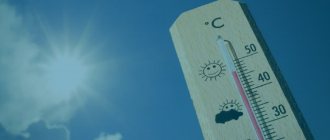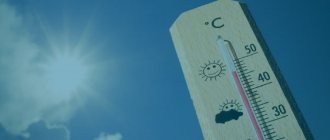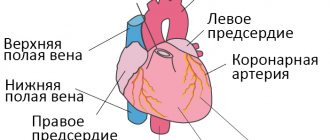Causes and consequences of heat stroke
The effect of high temperature and high humidity on the body is very negative. Heatstroke can occur on the street, indoors, in a bathhouse, sauna, in vehicles, etc. In this case, the body loses a significant amount of water and a malfunction in thermoregulation occurs. Factors influencing the development of heat stroke:
- long exposure to heat;
- work near a source of high temperature;
- clothing that prevents sweat from evaporating;
- failure to replenish water balance in the heat;
- physical activity at high temperatures.
Medicine distinguishes heatstroke into several degrees of severity.
- Signs of a mild form: lethargy, fatigue, drowsiness.
- Moderate symptoms: those described above, plus increased body temperature, nausea, fainting, increased sweating, nosebleeds, and severe thirst.
- A severe form of heatstroke is a dangerous condition for the body. Confusion occurs, there is no sweating, the skin is dry and hot, arrhythmia, damage to the heart muscle is possible, the kidneys are under severe stress.
A victim who has been in the sun may show signs of both heatstroke and sunstroke.
Main symptoms
Signs of heat stroke increase gradually as overheating increases. The skin becomes red and hot; in the first stages of the condition, profuse sweating appears, which is subsequently replaced by dry skin. General weakness, dizziness, double vision and difficulty focusing appear. Breathing becomes more frequent, its rhythm is disrupted, and shortness of breath develops. The pulse quickens and weakens. Nausea and vomiting, convulsions and hyperthermia occur, confusion of consciousness appears, including hallucinations.
The classic form of heatstroke occurs in mild, moderate and severe forms. Their symptoms coincide with those of sunstroke, differing only in the generalization of the process: neurological symptoms are accompanied by more severe disorders of the cardiovascular, respiratory, endocrine and urinary systems.
Other forms of heat stroke are also encountered in clinical practice:
- hyperthermic (pyretic), the main symptom of which is intense heat (39-42°C);
- asphyxial, characterized primarily by respiratory distress;
- dyspeptic (gastroenterological) with severe nausea, vomiting, diarrhea and urinary retention;
- cerebral (paralytic), the main symptom of which is convulsions and disturbances of consciousness caused by oxygen starvation.
Without specialized assistance, the severity of the condition progressively increases. It can result in the development of cerebral and pulmonary edema, disseminated intravascular coagulation syndrome, intracranial hemorrhage, heart and kidney failure.
Causes and consequences of sunstroke
Sunstroke can only happen to someone who is exposed to sunlight, as opposed to heat. This happens when the head is uncovered, the blood vessels of the brain dilate, capillaries can burst, which leads to excessive fluid flow to the head and damage to the nervous system. Also, sunstroke may not occur immediately, but after several hours. Its symptoms:
- dizziness and headache;
- high temperature, sweating;
- vomiting, diarrhea.
In particularly serious cases, a person may lose consciousness. There are also three types of consequences of such a blow: in the first case, breathing and the heart can stop, in the second - cardiac arrest and coma, and in the third - the appearance of hallucinations, delirium and even paralysis.
First aid for overheating and sunstroke
Excessive exposure to the sun can lead to a sharp deterioration in health associated with overheating of the body. At risk, first of all, are children and the elderly, as well as people suffering from diseases of the circulatory system and metabolic disorders (thyroid diseases, diabetes, obesity, etc.).
The cause of health problems is a violation of thermoregulation. Body temperature depends on the ratio of heat generation processes in the body and heat transfer to the external environment. When the ambient temperature rises to 25-300C, high air humidity, and prolonged exposure to the sun, heat transfer becomes more difficult, which leads to overheating of the body. This is also facilitated by inappropriate clothing (synthetic, dark colors, too warm), physical activity, poor drinking habits, and the lack of a hat makes the development of sunstroke possible.
Overheating
- a state of the body in which, under the influence of external thermal factors (including solar radiation), an increase in body temperature occurs, accompanied by pathological changes in various functions of the body.
The first symptoms of overheating are:
increasing weakness, lethargy, feeling tired, drowsiness, headache, thirst, redness and moisture of the skin, increased heart rate and breathing against the background of normal body temperature.
As the condition progresses, the victim's temperature rises (up to 39-400C), headache increases, dizziness, tinnitus, nausea and vomiting appear, and sweating increases. The pressure decreases, weakness of cardiac activity develops, breathing becomes rare and irregular. Brief loss of consciousness (fainting) and convulsions are possible.
A characteristic sign of a serious condition is the cessation of sweating. The skin becomes dry, breathing becomes frequent and shallow, the pulse increases, and blood pressure drops. If you do not provide first aid to a person, a coma can occur with a fatal outcome.
Sunstroke
- This is damage to the central nervous system (brain) as a result of exposure to direct sunlight on the head. It is important to know that sunstroke can occur not only during exposure to the sun, but also after 6-8 hours.
Signs of sunstroke:
general malaise, feeling of exhaustion, increased body temperature, redness of the facial skin, headache and dizziness, tinnitus, “flickering of midges” before the eyes. There may be nausea and vomiting, increased heart rate and breathing, increased sweating, and nosebleeds.
With more severe damage, a severe headache appears, the temperature rises to 40-410C, blood pressure drops, loss of consciousness, breathing problems and convulsions may occur.
In hot weather outside, in a stuffy room or in transport, fainting
and without prior overheating or bareheaded exposure to the sun.
The onset of fainting is usually preceded by a pre-fainting state
: weakness, dizziness, darkening of the eyes, numbness of the arms and legs. Often this is all there is to it, but it happens that a person turns pale, breaks out in a cold sweat, his limbs become cold and he loses consciousness.
Knowing how to provide first aid for fainting, overheating and sunstroke can save the victim’s life.
The main thing is not to get confused and do everything quickly and correctly.
First aid for overheating and sunstroke
ü Transfer the victim to a cool, shady place
and lay him on his back
, placing a cushion of available materials (for example, rolled-up clothing) under his feet to improve blood flow to the head.
ü Unbutton your clothes, loosen your trouser belt and tie knot.
ü Provide complete rest and access to fresh air
(you can additionally use a fan in the room).
ü If the victim is conscious, give him cold water to drink.
(if possible, salted at the rate of 0.5 teaspoon of salt per 0.5 liter of water)
or strong iced tea.
ü Place a cold compress on your head
(wet towel) or wet your head with cold water. If possible, wrap the victim in a damp sheet or carefully pour cool water over him; Apply ice or cold water bottles to the head, armpits, groin and popliteal areas.
In more severe cases, when the victim is unconscious and there are breathing problems, it is necessary to check the patency of his respiratory tract. Having discovered that the tongue is sunk and there is vomit in the mouth, you need to turn the victim’s head to the side and clean the oral cavity with a bandage or handkerchief wrapped around a finger.
If breathing is weakened or absent, call an ambulance, and before it arrives, perform artificial respiration (if there is no pulse, and chest compressions).
If ammonia is available, you can let the victim inhale its vapors (by applying ammonia to a cotton pad), this will help activate the respiratory center.
To provide qualified medical care, the victim must be taken to the nearest medical facility as soon as possible. Depending on the severity of the condition, hospitalization may be carried out in the therapeutic or intensive care department of hospitals.
Hygienist
public health departments
Gomel City Center for State Exposure
A.I. Zinovich
Difference between heatstroke and sunstroke
Infrared radiation coming from the sun can penetrate the blood-brain barrier, causing changes in parts of the brain. Excessive blood supply to the brain leads to compression of all cells. The nerve plexuses stop receiving adequate amounts of oxygen. If the condition persists for a long time, tissue necrosis and pulmonary edema may occur.
Heat stroke affects not just the brain, but all systems of the body. Excessive heating of the body can be stopped if a person changes his environment when unpleasant symptoms occur. In all cases, a person can be helped; for this it is necessary:
- isolate the victim from the sun;
- give air access;
- apply a cold compress to the forehead;
- give ammonia to smell, drink cool water;
- in serious cases, call an ambulance.
If you have a high temperature, antipyretic medications will not help; you need the help of a doctor. It is easier to prevent these conditions by observing the prevention of heat and sunstroke
How to help? Help for Heat Stroke
- Rule No. 1 - stop the main damaging factor - thermal radiation - as soon as possible. That is, depending on the situation, move the person to the shade or to a ventilated room; provide air access; remove clothing.
- Cool by all available means: - give cool water to drink; - wipe or even pour cold water on it; - Apply ice or a cloth regularly soaked in cold water to the neck and groin area.
- If breathing stops and the heart stops, perform cardiopulmonary resuscitation and be sure to call an ambulance. Even if a person has fully regained consciousness, he will require hospitalization and treatment in a hospital. Its goal is to help the body cope with the consequences of serious heat injury and return to a healthy functioning mode with minimal losses.
The most reliable way of self-help is to listen to the alarming signals of your body and prevent the breakdown of protective mechanisms: open a window, go out into the fresh air, move into the shade, take a cold shower, etc.
Make an appointment
Precautionary measures
To avoid unwanted effects from the sun and heat, you need to protect your head. When going outside, you should wear a hat. On the street you should avoid sunny places, being mostly in the shade. Without any special reason, in very hot weather, you should not leave the house or do so before 12 o’clock and after 16-17 o’clock. When going outside, you need to take still water and wet wipes for your face with you. On the beach - use sunscreen, do not be in direct sunlight, do not drink alcohol or fatty foods.
A person often feels ill in the hot summer on crowded buses or minibuses. Here you can use this life hack: buy a bottle of water from the refrigerator in advance and, while in transport, apply it to the side of your neck (to the jugular vein), so the blood will enter the brain cooled. This should be done without having chronic throat diseases.









